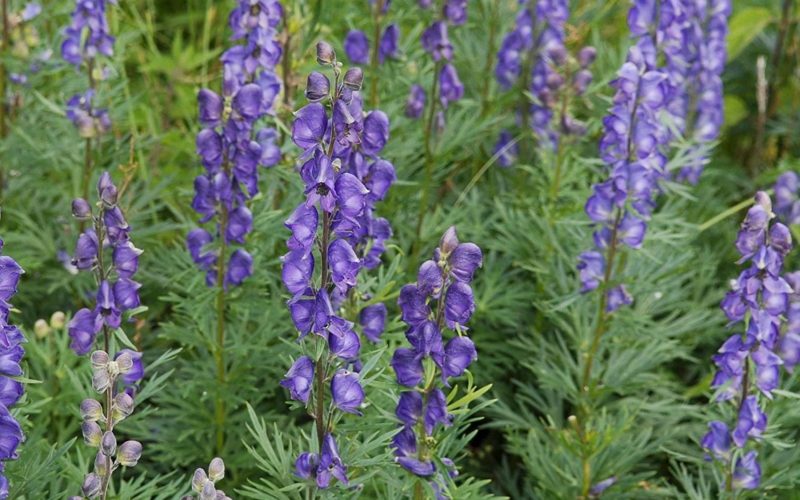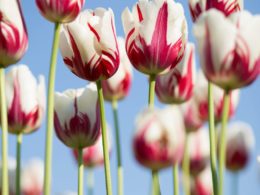Many of you might remember the junior school science books relating to venomous or poisonous plants. People in the Middle East once believed in the presence of a man-eating tree.
In 1878, an article written by Carl Liche, a German explorer, attained broad attention. He explored the dark regions of Madagascar, assisted by a society of Mkodo tribesmen. In his texts, Carl declares that he was a witness to a rather unusual scene. A woman from the Mkodo group drank the nectar from an ominous-looking tree, & sensing the presence, the pineapple-looking tree covered her in the branches and “ate her up.”
Even though any such tree doesn’t exist in the modern world, poisonous plants do exist. The pineapple-looking tree might have been an enhancement of the pitcher plant, which exists in hot & humid regions. The pitcher plant lures insects and vermin to it. Once they fall into the pitcher, they are inadequate to escape and become food for the plant.
Although human beings don’t need to be scared of any such danger, these toxic and beautiful creatures certainly draw everyone’s attention. Indoor plants online brightens up the entire hall at a glance.
Following is a brief compilation of some of the most dangerous plants that grow today.
1. Nerium Oleander
The most poisonous plant on Earth, all part of this plant is full of toxins. Two of the most powerful ones are oleandrin and nerine. An oleander’s poison is so powerful that it can poison a person who simply eats the honey made by bees that have absorbed oleander nectar.
Despite its poisonous nature, it is planted for ornamental purposes. The oleander gives a lovely fragrance; however, the animals stay beyond. They are often utilized for highway barriers. Its fast growth is used to prevent erosion at brand-new construction sites.
Oleander is dangerous to most animals as well as humans. The ingestion of oleander leaves has induced deaths in human beings. Though the toxin endures deadly for approximately the first 24 hours after ingestion, the odds of survival rise dramatically if the patient survives for a few hours. For auspicious treatment, the patient is induced to vomit, their stomach may be pumped, or they may be fed activated charcoal to digest as much of the poison as possible.
2. Cicuta or Water Hemlock
Found essentially in the marshy areas of the American continent, this plant bears a deadly toxin, cicutoxin, which is concentrated essentially in the roots. Unfortunately, the white roots of the plant are usually mistaken for the parsnip. Over the decades, it has gained itself a reputation as one of the most poisonous plants on the planet.
Cicutoxin causes violent & painful convulsions, nausea, vomiting, cramps, and muscle tremors. Those who endure the poisoning experience long-term health conditions, such as amnesia. No quantity of water hemlock root is considered safe to ingest.
3. Atropa Belladonna or Deadly Nightshade
Probably the plant with the scariest title, the dangerous nightshade grows to a height of 1.5 meters and can be identified by the dull, dark green leaves, and bell-shaped purple flowers.
The rich and juicy fruits make them tempting for children. Though it is located sparsely in the wild regions, it is restricted to cultivation. It’s one of the very rare plants which are poisonous for human beings but entirely safe for animals and birds.
The deadly poison strikes the nervous system, rendering the nerve closings in involuntary muscle paralysis. Symptoms involve dilated pupils, sensitivity to light, blurred vision, headaches, confusion, & convulsions. As rare as two ingested berries can kill a child, and 10 to 20 berries would kill an adult. Even wielding the plant can irritate.
4. Castor Oil Plant
The Castor plant began in Africa and is now found worldwide. It bears yellowish-green flowers with a red core. The leaves are long with toothed edges. In ancient times, the castor bean was utilized in ointments, and allegedly, Cleopatra implemented the oil to the whites of her eyes to brighten them.
You must have heard of castor oil, mild-tasting vegetable oil utilized as a food additive, additive in candy production, laxative, and to induce labor. It originated from the plant seeds, which are 40-50% oil.
This plant contains the poisonous toxin: ricin. Ricin is found in high concentrations in the grain coating. Though grain poisonings are rare, there have been fatalities.
Symptoms of castor poisoning comprise nausea, abdominal cramps, vomiting, internal bleeding, and kidney & circulation failure. Numerous people suffer from an allergic reaction to the dust from the grains and may experience coughing, muscle aches, and problem breathing. Exposure to dust is most familiar in areas where the beans are processed for commercial usage.
5. Aconitum or Aconite
One of the most attractive poisonous plants, aconite, contains blue, white, or flesh-colored bouquets at the top of the stalks. Though the plant looks very attractive, every part of it is bound with poison and is known to poison gardeners and backpackers who underestimate its white carrot-like root for horseradish or some other herb.
Contact with the plant can create a tingling, numbness, and in several cases, heart problems. Misuse can lead to a burning sensation in the mouth followed by enhanced salivation, vomiting, diarrhea, a tingling sensation in the skin, variations in blood pressure, heartbeat irregularities, coma, and sometimes even death.
Antiquity has witnessed the use of Aconite for shedding blood. Nazis apply the poison to lace their bullets. Ancient Greek shepherds bound darts with aconite to kill wolves & protect their herd. The Harry Potter series presents Severus Snape using aconite to turn Remus Lupin into a werewolf.
Top 5 Poisonous Plants In World

Leave a Reply
You must be logged in to post a comment.








